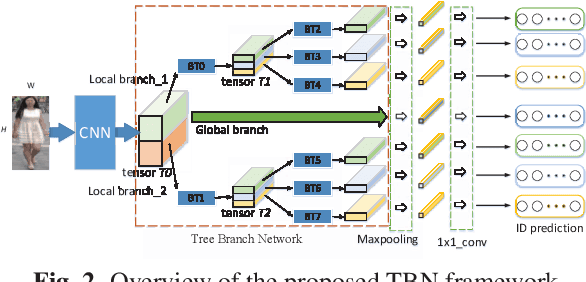Pedestrian re-identification based on Tree branch network with local and global learning
Paper and Code
Mar 31, 2019



Deep part-based methods in recent literature have revealed the great potential of learning local part-level representation for pedestrian image in the task of person re-identification. However, global features that capture discriminative holistic information of human body are usually ignored or not well exploited. This motivates us to investigate joint learning global and local features from pedestrian images. Specifically, in this work, we propose a novel framework termed tree branch network (TBN) for person re-identification. Given a pedestrain image, the feature maps generated by the backbone CNN, are partitioned recursively into several pieces, each of which is followed by a bottleneck structure that learns finer-grained features for each level in the hierarchical tree-like framework. In this way, representations are learned in a coarse-to-fine manner and finally assembled to produce more discriminative image descriptions. Experimental results demonstrate the effectiveness of the global and local feature learning method in the proposed TBN framework. We also show significant improvement in performance over state-of-the-art methods on three public benchmarks: Market-1501, CUHK-03 and DukeMTMC.
 Add to Chrome
Add to Chrome Add to Firefox
Add to Firefox Add to Edge
Add to Edge